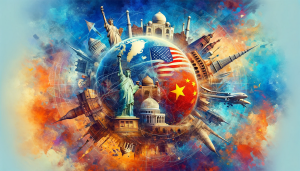zThe economy during the turbulent period between the First and Second World Wars
The economy during the turbulent period between the First and Second World Wars
Fast-forward a hundred years from the Industrial Revolution and we can analyze the events of the interwar period and how they came to affect each country so differently.
Although this period in history was characterized by immense loss and a desire for rebuilding, it was also a time of trouble for many European nations.
For example, if we analyze the case of Germany, we will see that it had difficulties to recover after the defeat during the First World War, since its economy was almost paralyzed by the payments of reparations to the Allied Nations, combined with the periods of economic crisis. , including the hyperinflation it suffered during the 1920s.
Other countries fared slightly better during this time, but the period of relative stability was not forever. The United States, for example, was facing one of the best moments in terms of political stability, after World War I, but its luck turned for the worse when the Wall Street Stock Market crashed in 1929, causing the entire world plunged into a global recession with what became known as the Great Depression.
Ultimately, this background of economic recession and crisis served as a backdrop for the arrival of Hitler, who became Chancellor of Germany in 1933 and who in 1939 set off World War II, following the occupation of Poland by Germany.







